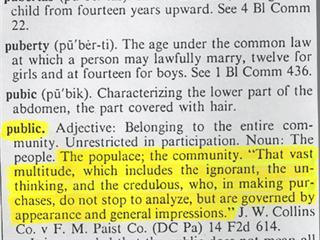Certified Mail, Return Receipt Requested
No. 7007 0220 0003 7610 0193
Mr. Brian Millsap, State Administrator
U.S. Fish & Wildlife Service
New Mexico Ecological Services Office
2105 Osuna, N.E.
Albuquerque NM 87113
Dear Mr. Millsap:
Re: U. S. Fish & Wildlife Service Wolf Program
I strongly oppose the Fish and Wildlife Service’s Wolf program, the release of any additional wolves into the rural areas of the United States and especially New Mexico including Otero County.
Wolves are one of the most viscous predators in the world.
I receive electronic messages on a continual basis about numerous problems that rural residents, especially in the western states, are having with wolves.
There are numerous examples of attacks by wolves on a wide variety of wildlife species, domesticated livestock, pets and humans, Attachment 1.
Residents in the Gila area of New Mexico, where there are a number of wolves, routinely carry firearms when they leave their residences including feeding their livestock near their homes because of the presence of wolves.
The Gila parents have begun to build wolf proof shelters where their children can safely stay while waiting for the school bus or for their parents when they return from school.
There are numerous reports about wolves attacking livestock. In addition, there are a number of reports where ranchers find their livestock have been killed, but there are very few remains to identify the animal as the wolves have eaten almost everything including the hide and bones.
I realize that some of the Animal Rights Activist Organizations brag about reimbursing ranchers for any livestock that have been killed by wolves.
However, experience has proven that it is extremely difficult to scientifically prove a wolf kill in order to obtain any but a minimal reimbursement.
On December 14, 2007 I received an electronic message about a Grizzly Bear on the Montana/Wyoming border that was being chased by wolves, was hit by a log truck and killed, Attachment 2.
The classified Mexican Gray Wolves that have been released in the Gila are endangered only because the Fish & Wildlife Service was able to successfully provide information for the classification.
I have received a number of opinions that the information provided by the Fish & Wildlife Service to have the Mexican Gray Wolf listed as endangered was faulty.
At an El Lobo Forum that was held at New Mexico State University, Las Cruces, several years ago, a number of “Wolf Experts” stated that all wolves are genetically the same. The wolves are called different names according to where they are located, i.e. Mexican Gray Wolf, Timber Wolf, Alaskan Wolf, etc.
When the discussions first started about re-introducing wolves in New Mexico, a contingent of individuals who were promoting the wolves, attended a New Mexico State Game Commission meeting.
During the discussions, Game Commissioner Mr. George Ortega, stated, “You folks have to realize that this country isn’t like it was even 50 years ago much less how it was when native wolves were in this area.”
When I was riding the school bus from my residence in Mayhill to Cloudcroft NM in the early 1940s, a distance of 18 miles, there were only 17 residences near the highway with school children being picked up at only 12 of those locations.
How many houses are there now between Mayhill and Cloudcroft?
Without doing some extensive research the number is unknown, but many more than 17.
However, there are now 20 sub-divisions between Mayhill and Cloudcroft and the number of houses in each sub- division is unknown. However, one can count more than 17 houses, in several of the sub-divisions, from the highway and that doesn’t include the houses that can’t been seen from the highway.
In addition, there are numerous individual dwellings that aren’t in sub-divisions.
Proponents of the wolf re-introduction program state that wolves are needed to balance the ecosystems.
However, the last known wild wolf in Otero County was killed by government trapper Mr. Ellis Wright many years ago. The exact date is unknown.
Mr. Wright died in 1977 at 83 years of age and the wolf was killed at least 25 years prior to this death and probably much longer.
Therefore, Otero County has been without wolves for at least 50 years and there is no proof that the ecosystem has been degraded.
In fact the livestock industry in Otero County has flourished and is one of the main contributors to the economic health of the county.
In a December 20, 2007 press release, New Mexico U. S. Congressman Stevan Pearce stated in part and I quote:
“I am disappointed more of my colleagues could not see the wisdom in eliminating an unsuccessful, ineffective program that has not only failed to produce results, but also threatens the lives and livelihoods of New Mexicans.
We have people in the second district that can’t check their mail without taking a pistol to the mailbox for fear of being attacked.
Since its inception, the Mexican gray wolf reentry program has spent more than $14 million on the release of just 59 wolves – at a cost of over $237,000. per wolf.
In the meantime we shouldn’t be wasting more and more resources on a failed program that puts people’s lives and livelihoods in danger.
Pearce believes the time has come to concede that wolves cannot successfully be reintroduced into New Mexico and is disappointed Congress has not yet reached that view.” Attachment 3.
I am in total agreement with Congressman Pearce.
Sincerely,
R L Posey
Posts and Comments from Readers
Please include yourself in the discussion. Post a comment.
Saturday, January 5, 2008
R L Posey Regarding Wolves
Subscribe to:
Post Comments (Atom)



















.jpg)


















No comments:
Post a Comment